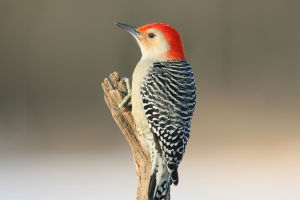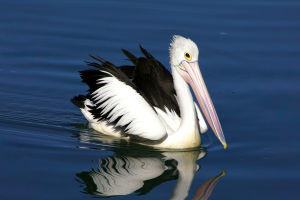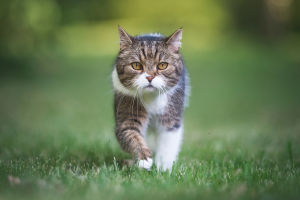The Crested Penguin is an eye-catching seabird belonging to the penguin family.
Known for its unique appearance and behavior, this penguin inhabits the Antarctic and sub-Antarctic regions.
It is not only an essential part of the Antarctic ecosystem but also attracts the attention of numerous scientists due to its distinctive physiological features and social behaviors.
1. Physical Characteristics
The Crested Penguin is of medium size, with adult individuals typically standing about 65 to 75 centimeters tall and weighing between 3 to 6 kilograms. Its feathers are primarily black and white, creating a striking color contrast.
The most notable feature is its golden crest, which forms a unique "crown," making the Crested Penguin stand out among other penguins. A pair of golden feathers extends from the eyes to the back of the head in an elegant curve, not only distinguishing them from their peers but also helping to attract mates during the breeding season.
2. Habitat
Crested Penguins primarily inhabit Antarctica and some surrounding islands, such as the Falkland Islands, South Georgia, and the South Sandwich Islands.
They typically breed on rocky coasts and in ice-edge areas, choosing relatively flat ground to build their nests to ensure the safety of their eggs and chicks. Despite their habitat being primarily in the cold Antarctic environment, Crested Penguins have excellent adaptability, allowing them to survive in extreme climatic conditions.
3. Behavior
Crested Penguins are exceptional swimmers, capable of diving deep underwater to search for food.
Their diet mainly consists of fish, crustaceans, and mollusks, with typical diving depths reaching up to 100 meters and maximum dive durations of up to 20 minutes. Their swimming style is highly agile, allowing them to swiftly navigate underwater to catch prey.
During the breeding season, Crested Penguins gather in large groups. Their breeding period usually occurs from October to February each year. After mating, females lay two eggs in rock crevices, and both parents take turns incubating them for about 35 days. After hatching, the parents alternately care for their chicks, feeding and protecting them until they can live independently.
4. Social Behavior
Crested Penguins exhibit rich social behaviors, communicating through various vocalizations and body language.
During the breeding season, males attract females by producing specific calls and displaying their size and plumage to showcase their health and vitality. Females typically choose larger males with brighter feather colors for mating, a selective breeding process that helps maintain genetic diversity within the population.
Additionally, Crested Penguins demonstrate significant social behavior while foraging. They often appear in small groups underwater, using cooperation to enhance their hunting success. This social behavior not only strengthens their survival abilities but also provides important case studies for scientists studying animal social structures.
5. Ecological Importance
As top predators, their predation behavior is vital for maintaining the balance of the marine food chain. By preying on fish and crustaceans, they help regulate the populations of these species, impacting the overall health of the ecosystem.
However, the survival of Crested Penguins is threatened by various factors. Global warming has led to the reduction of Antarctic ice, affecting their habitat and food sources. Moreover, human activities, such as overfishing and ocean pollution, also pose threats to their survival. Therefore, protecting their habitats and ecosystems has become an essential part of global conservation efforts.
As a unique species in the Antarctic region, the Crested Penguin not only captivates our attention with its elegant appearance and exceptional swimming abilities but also serves as a vital window into understanding the Antarctic ecosystem. By deepening our understanding of these beautiful creatures, we can better appreciate and cherish the natural world, promoting ecological balance and sustainable development.


